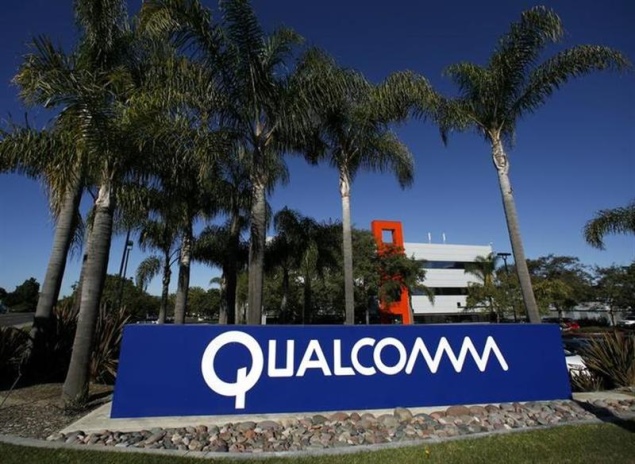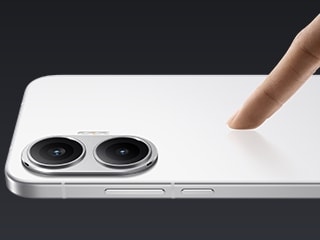- Home
- Mobiles
- Mobiles News
- Chipmakers dream of China as they head to Barcelona for MWC 2014
Chipmakers dream of China as they head to Barcelona for MWC 2014

From Qualcomm and Intel to MediaTek, Marvell and Broadcom, the suppliers of the crucial components that power smartphone applications and drive high-speed wireless connections are scrambling to capitalize on opportunities taking shape as Chinese brands and telecoms carriers such as China Mobile gear up for 4G LTE, or Long-Term Evolution.
China's move to LTE, a standard now adopted mostly in the United States, gives Intel and other chipmakers a unique chance to knock dominant LTE chip supplier Qualcomm off its perch.
The Mobile World Congress will be a pivotal battleground.
With more Chinese companies than ever showing up in Spain - 99 exhibitors from China this year, up from 70 last year - the event presents an opportunity for chipmakers to show off their best products.
Companies including Intel and Qualcomm will debut new and upcoming LTE-oriented microprocessors in Barcelona. Many are designed to consume less power and will be priced lower than previous cutting-edge components, making them ideal for mid-range and cheaper phones popular in China and other emerging markets.
That focus will be pervasive across the exhibition floor.
Qualcomm has created a Chinese version of a Mobile World Congress smartphone app for the event and has posted translations of signs around its display area. It's even sending pre-show emails in Chinese directed at Chinese visitors.
"We're going to have a lot of demos targeted at China, a lot of demos on LTE," said Executive Vice President Cristiano Amon. "Qualcomm looks at the opportunity of LTE and the smartphone migration in emerging markets as a very big opportunity."
Taiwan's MediaTek, little known in the United States despite being the top smartphone chip player in the vast Chinese market, is launching a branding campaign aimed at the event's 75,000 attendees, with ads prominently displayed at the airport, convention center and other areas around the city.
Billboard ads showing content smartphone users across a range of ethnicities underscore MediaTek's plan to leverage its low-cost business model to become a more global player and compete further against Qualcomm.
Fueling demand for chips
Thanks to an early technology advantage, Qualcomm has been virtually the sole provider of LTE chips for smartphones for nearly four years. The adoption of LTE in more countries is expected to fuel demand for chips.
"They're very good at LTE," MediaTek Chief Marketing Officer Johan Lodenius said. "What's in our favor is that all the operators worldwide are really looking for an alternative. They don't want to be single-sourced with Qualcomm."
Following engineering setbacks, Intel, MediaTek, Broadcom and other Qualcomm challengers in Barcelona are also promoting new and upcoming LTE offerings, although few of those chips are expected to show up in smartphones that will be on display this week.
Santa Clara, California-based chipmaker Marvell has made some early progress, with its LTE components chosen for a handful of upcoming low-priced phones aimed at the fast-growing China market.
On Monday, Intel announced a new LTE chip it's testing with major wireless carriers. Intel Marketing Director Julie Coppernoll said that chip would be used in phones sold later in 2014.
If so, that would be a major step forward in the Santa Clara, California, company's smartphone business after it was slow to recognize the mobile revolution sparked by Apple's first iPhone in 2007.
"There are a lot of people making a lot of noise about getting these things to market. We're really getting ours to market," Coppernoll said. "We have made radical shifts in progress and improvements in our products and our working relationships."
Like other chipmakers, Intel has been redrawing its roadmap to focus more on smartphones retailing below $300 and less on components for high-end phones like the iPhone 5s, which in the United States retails for $649 and higher without a contract.
Broadcom this month debuted its new LTE chip aimed at mid- to low-priced smartphones.
Worldwide shipments of high-end phones are expected to grow a meager 4 percent a year through 2018, according to ARM Holdings, a British company behind much of the technology used in mobile processors.
But shipments of mid-range phones and entry-level smartphones are expected to grow 14 and 17 percent a year, respectively, ARM believes.
For its part, Qualcomm on Sunday unveiled two upcoming mobile chips, both of which include LTE and are aimed squarely at China. Manufacturers are also set to announce more than 10 new Qualcomm-based devices, including several LTE phones, said a Qualcomm spokeswoman.
Even Microsoft an also-ran in the mobile technology space - is keen to expand its presence in the China handset market. It announced a new reference design program to make it easy for manufacturers to quickly launch Windows-based smartphones using Qualcomm chips.© Thomson Reuters 2014
Catch the latest from the Consumer Electronics Show on Gadgets 360, at our CES 2026 hub.
Related Stories
- Samsung Galaxy Unpacked 2025
- ChatGPT
- Redmi Note 14 Pro+
- iPhone 16
- Apple Vision Pro
- Oneplus 12
- OnePlus Nord CE 3 Lite 5G
- iPhone 13
- Xiaomi 14 Pro
- Oppo Find N3
- Tecno Spark Go (2023)
- Realme V30
- Best Phones Under 25000
- Samsung Galaxy S24 Series
- Cryptocurrency
- iQoo 12
- Samsung Galaxy S24 Ultra
- Giottus
- Samsung Galaxy Z Flip 5
- Apple 'Scary Fast'
- Housefull 5
- GoPro Hero 12 Black Review
- Invincible Season 2
- JioGlass
- HD Ready TV
- Laptop Under 50000
- Smartwatch Under 10000
- Latest Mobile Phones
- Compare Phones
- OPPO Reno 15 Pro Max
- Honor Win RT
- Honor Win
- Xiaomi 17 Ultra Leica Edition
- Xiaomi 17 Ultra
- Huawei Nova 15
- Huawei Nova 15 Pro
- Huawei Nova 15 Ultra
- Asus ProArt P16
- MacBook Pro 14-inch (M5, 2025)
- OPPO Pad Air 5
- Huawei MatePad 11.5 (2026)
- Xiaomi Watch 5
- Huawei Watch 10th Anniversary Edition
- Acerpure Nitro Z Series 100-inch QLED TV
- Samsung 43 Inch LED Ultra HD (4K) Smart TV (UA43UE81AFULXL)
- Asus ROG Ally
- Nintendo Switch Lite
- Haier 1.6 Ton 5 Star Inverter Split AC (HSU19G-MZAID5BN-INV)
- Haier 1.6 Ton 5 Star Inverter Split AC (HSU19G-MZAIM5BN-INV)

















